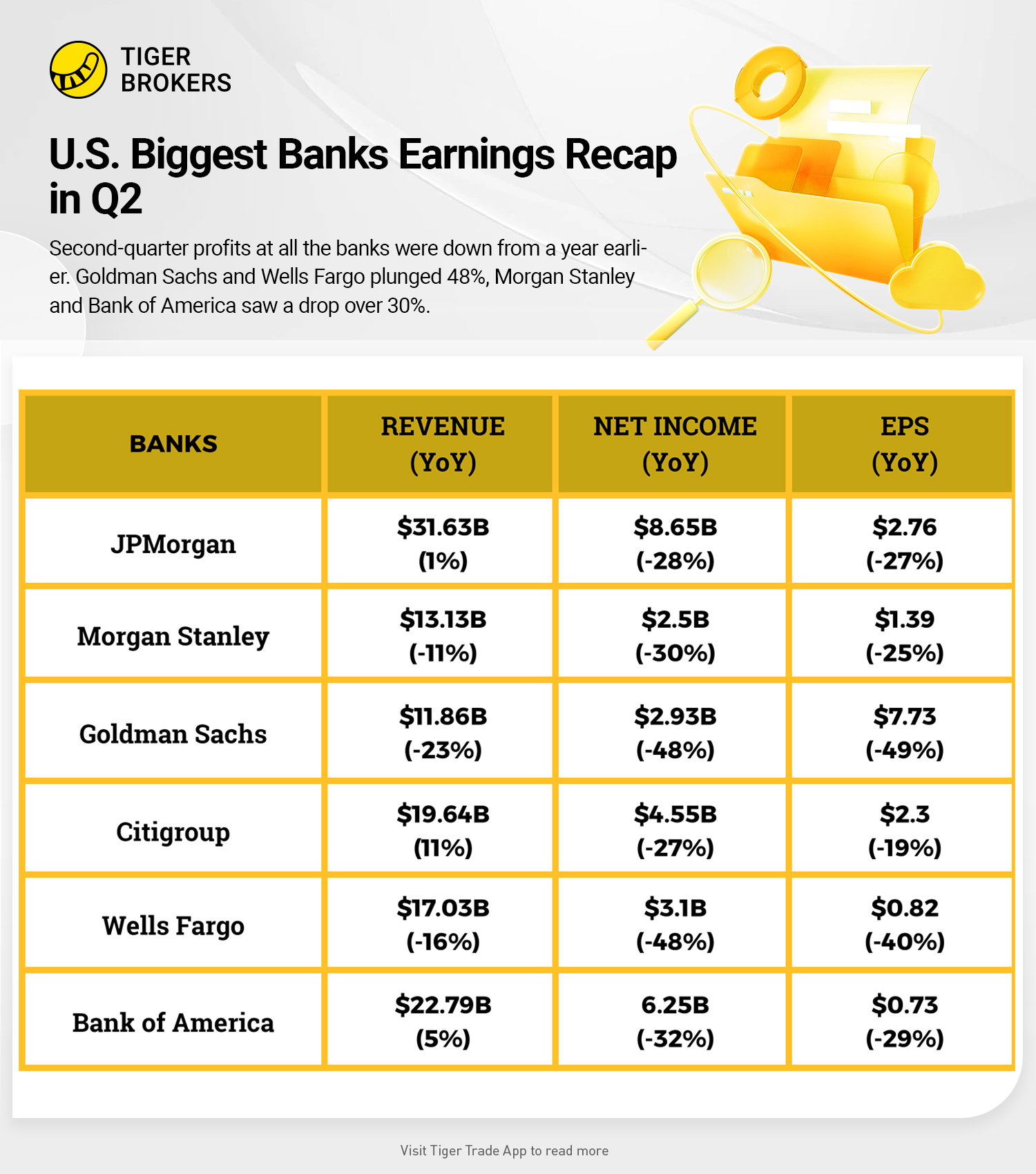Second-quarter profits at all the banks were down from a year earlier. Goldman Sachs and Wells Fargo plunged 48%, Morgan Stanley and Bank of America saw a drop over 30%.
The banks are in good financial health but their profits were weaker than they were last year—and in many cases, they were far weaker than analyst estimates.
The decline in profit wasn’t as severe as analysts expected. Consumers continued to spend and borrow. Markets were volatile, but there was money to be made in trading. And bank leaders struck a tone of caution, but none thought a recession was underway.
“It’s a challenging market, but I think it is important to say that it’s not 2008 complicated,” James Gorman, Morgan Stanley’s chief executive, told analysts.
Recession
Bank chiefs said they expected the economy to slow but not slip into outright contraction.
“Nothing in the data that I see signals that the U.S. is on the cusp of recession,” Jane Fraser, Citigroup’s chief executive, said on a conference call. “While a recession could indeed take place, it is highly unlikely to be as severe as others we have seen.”
Executives at JPMorgan Chase also said there were no clear signs of a recession yet. Retail banking customers are still spending money on discretionary purchases like travel and restaurants, they said.
“We’ve looked a lot very carefully into our actual data,” Jeremy Barnum, JPMorgan’s chief financial officer, said on a call with reporters. “There is essentially no evidence of actual weakness.”
Lending
Michael Santomassimo, Wells Fargo’s finance chief, said the bank’s management was preparing fora range of scenariosbut flagged that “things will probably get worse.”
Lending was up at nearly all the banks, in a positive sign for the economy. Consumers and companies increased their borrowing from the largest banks by an average of 6 percent in the second quarter compared with the same period last year.
The biggest gains were in corporate loans, which rose nearly 20 percent from a year earlier at both JPMorgan and Bank of America. Home mortgages slowed in the quarter, a reflection of higher interest rates, but were still up at most of the banks. And for the most part, consumers and business customers continued to pay their debts on time. For instance, at JPMorgan, just 0.5 percent of customers’ credit card loans were past due by 90 days or more.
Nearly all the banks, citing economic uncertainty, said they expected an increase in the number of borrowers, particularly individuals, who would fall behind on their loans. The six biggest banks collectively expect nearly $2 billion more in loan losses over the coming year than they did three months ago.
Trading
Most investors lost money in their investment accounts in the second quarter, but market volatility was a boon for the banks. That was particularly true atGoldman Sachs, where trading revenue rose 31 percent, outpacing its rivals. Citigroup also reported better-than-expected results driven by increased trading commissions and market gains.
In the wake of the financial crisis a decade ago, the large banks, driven in part by regulators and changes in the law, vowed to shy away from making risky bets in the market. Now, many of them are generating an increasing portion of their revenue from trading, though banks still say they are taking fewer risks than they did before.

